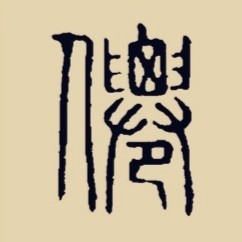 芝华塔尼欧的少年
芝华塔尼欧的少年
-
函数名: stpcpy
功 能: 拷贝一个字符串到另一个
用 法: char *stpcpy(char *destin, char *source);
程序例:
#include <stdio.h>
#include <string.h>
int main(void)
{
char string[10];
char *str1 = "abcdefghi";
stpcpy(string, str1);
printf("%sn", string);
return 0;
}
函数名: strcat
功 能: 字符串拼接函数
用 法: char *strcat(char *destin, char *source);
程序例:
#include <string.h>
#include <stdio.h>
int main(void)
{
char destination[25];
char *blank = " ", *c = "C++", *Borland = "Borland";
strcpy(destination, Borland);
strcat(destination, blank);
strcat(destination, c);
printf("%sn", destination);
return 0;
}
函数名: strchr
功 能: 在一个串中查找给定字符的第一个匹配之处
用 法: char *strchr(char *str, char c);
程序例:
#include <string.h>
#include <stdio.h>
int main(void)
{
char string[15];
char *ptr, c = "r";
strcpy(string, "This is a string");
ptr = strchr(string, c);
if (ptr)
printf("The character %c is at position: %dn", c, ptr-string);
else
printf("The character was not foundn");
return 0;
}
函数名: strcmp
功 能: 串比较
用 法: int strcmp(char *str1, char *str2);
看Asic码,str1>str2,返回值 > 0;两串相等,返回0
程序例:
#include <string.h>
#include <stdio.h>
int main(void)
{
char *buf1 = "aaa", *buf2 = "bbb", *buf3 = "ccc";
int ptr;
ptr = strcmp(buf2, buf1);
if (ptr > 0)
printf("buffer 2 is greater than buffer 1n");
else
printf("buffer 2 is less than buffer 1n");
ptr = strcmp(buf2, buf3);
if (ptr > 0)
printf("buffer 2 is greater than buffer 3n");
else
printf("buffer 2 is less than buffer 3n");
return 0;
}
函数名: strncmpi
功 能: 将一个串中的一部分与另一个串比较, 不管大小写
用 法: int strncmpi(char *str1, char *str2, unsigned maxlen);
程序例:
#include <string.h>
#include <stdio.h>
int main(void)
{
char *buf1 = "BBB", *buf2 = "bbb";
int ptr;
ptr = strcmpi(buf2, buf1);
if (ptr > 0)
printf("buffer 2 is greater than buffer 1n");
if (ptr < 0)
printf("buffer 2 is less than buffer 1n");
if (ptr == 0)
printf("buffer 2 equals buffer 1n");
return 0;
}
函数名: strcpy
功 能: 串拷贝
用 法: char *strcpy(char *str1, char *str2);
程序例:
#include <stdio.h>
#include <string.h>
int main(void)
{
char string[10];
char *str1 = "abcdefghi";
strcpy(string, str1);
printf("%sn", string);
return 0;
}
函数名: strcspn
功 能: 在串中查找第一个给定字符集内容的段
用 法: int strcspn(char *str1, char *str2);
程序例:
#include <stdio.h>
#include <string.h>
#include <alloc.h>
int main(void)
{
char *string1 = "1234567890";
char *string2 = "747DC8";
int length;
length = strcspn(string1, string2);
printf("Character where strings intersect is at position %dn", length);
return 0;
}
函数名: strdup
功 能: 将串拷贝到新建的位置处
用 法: char *strdup(char *str);
程序例:
#include <stdio.h>
#include <string.h>
#include <alloc.h>
int main(void)
{
char *dup_str, *string = "abcde";
dup_str = strdup(string);
printf("%sn", dup_str);
free(dup_str);
return 0;
}
函数名: stricmp
功 能: 以大小写不敏感方式比较两个串
用 法: int stricmp(char *str1, char *str2);
程序例:
#include <string.h>
#include <stdio.h>
int main(void)
{
char *buf1 = "BBB", *buf2 = "bbb";
int ptr;
ptr = stricmp(buf2, buf1);
if (ptr > 0)
printf("buffer 2 is greater than buffer 1n");
if (ptr < 0)
printf("buffer 2 is less than buffer 1n");
if (ptr == 0)
printf("buffer 2 equals buffer 1n");
return 0;
}
函数名: strerror
功 能: 返回指向错误信息字符串的指针
用 法: char *strerror(int errnum);
程序例:
#include <stdio.h>
#include <errno.h>
int main(void)
{
char *buffer;
buffer = strerror(errno);
printf("Error: %sn", buffer);
return 0;
}
函数名: strcmpi
功 能: 将一个串与另一个比较, 不管大小写
用 法: int strcmpi(char *str1, char *str2);
程序例:
#include <string.h>
#include <stdio.h>
int main(void)
{
char *buf1 = "BBB", *buf2 = "bbb";
int ptr;
ptr = strcmpi(buf2, buf1);
if (ptr > 0)
printf("buffer 2 is greater than buffer 1n");
if (ptr < 0)
printf("buffer 2 is less than buffer 1n");
if (ptr == 0)
printf("buffer 2 equals buffer 1n");
return 0;
}
函数名: strncmp
功 能: 串比较
用 法: int strncmp(char *str1, char *str2, int maxlen);
程序例:
#include <string.h>
#include <stdio.h>
int main(void)
{
char *buf1 = "aaabbb", *buf2 = "bbbccc", *buf3 = "ccc";
int ptr;
ptr = strncmp(buf2,buf1,3);
if (ptr > 0)
printf("buffer 2 is greater than buffer 1n");
else
printf("buffer 2 is less than buffer 1n");
ptr = strncmp(buf2,buf3,3);
if (ptr > 0)
printf("buffer 2 is greater than buffer 3n");
else
printf("buffer 2 is less than buffer 3n");
return(0);
}
函数名: strncmpi
功 能: 把串中的一部分与另一串中的一部分比较, 不管大小写
用 法: int strncmpi(char *str1, char *str2);
程序例:
#include <string.h>
#include <stdio.h>
int main(void)
{
char *buf1 = "BBBccc", *buf2 = "bbbccc";
int ptr;
ptr = strncmpi(buf2,buf1,3);
if (ptr > 0)
printf("buffer 2 is greater than buffer 1n");
if (ptr < 0)
printf("buffer 2 is less than buffer 1n");
if (ptr == 0)
printf("buffer 2 equals buffer 1n");
return 0;
}
函数名: strncpy
功 能: 串拷贝
用 法: char *strncpy(char *destin, char *source, int maxlen);
程序例:
#include <stdio.h>
#include <string.h>
int main(void)
{
char string[10];
char *str1 = "abcdefghi";
strncpy(string, str1, 3);
string[3] = "";
printf("%sn", string);
return 0;
}
函数名: strnicmp
功 能: 不注重大小写地比较两个串
用 法: int strnicmp(char *str1, char *str2, unsigned maxlen);
程序例:
#include <string.h>
#include <stdio.h>
int main(void)
{
char *buf1 = "BBBccc", *buf2 = "bbbccc";
int ptr;
ptr = strnicmp(buf2, buf1, 3);
if (ptr > 0)
printf("buffer 2 is greater than buffer 1n");
if (ptr < 0)
printf("buffer 2 is less than buffer 1n");
if (ptr == 0)
printf("buffer 2 equals buffer 1n");
return 0;
}
函数名: strnset
功 能: 将一个串中的所有字符都设为指定字符
用 法: char *strnset(char *str, char ch, unsigned n);
程序例:
#include <stdio.h>
#include <string.h>
int main(void)
{
char *string = "abcdefghijklmnopqrstuvwxyz";
char letter = "x";
printf("string before strnset: %sn", string);
strnset(string, letter, 13);
printf("string after strnset: %sn", string);
return 0;
}
函数名: strpbrk
功 能: 在串中查找给定字符集中的字符
用 法: char *strpbrk(char *str1, char *str2);
程序例:
#include <stdio.h>
#include <string.h>
int main(void)
{
char *string1 = "abcdefghijklmnopqrstuvwxyz";
char *string2 = "onm";
char *ptr;
ptr = strpbrk(string1, string2);
if (ptr)
printf("strpbrk found first character: %cn", *ptr);
else
printf("strpbrk didn"t find character in setn");
return 0;
}
函数名: strrchr
功 能: 在串中查找指定字符的最后一个出现
用 法: char *strrchr(char *str, char c);
程序例:
#include <string.h>
#include <stdio.h>
int main(void)
{
char string[15];
char *ptr, c = "r";
strcpy(string, "This is a string");
ptr = strrchr(string, c);
if (ptr)
printf("The character %c is at position: %dn", c, ptr-string);
else
printf("The character was not foundn");
return 0;
}
函数名: strrev
功 能: 串倒转
用 法: char *strrev(char *str);
程序例:
#include <string.h>
#include <stdio.h>
int main(void)
{
char *forward = "string";
printf("Before strrev(): %sn", forward);
strrev(forward);
printf("After strrev(): %sn", forward);
return 0;
}
函数名: strset
功 能: 将一个串中的所有字符都设为指定字符
用 法: char *strset(char *str, char c);
程序例:
#include <stdio.h>
#include <string.h>
int main(void)
{
char string[10] = "123456789";
char symbol = "c";
printf("Before strset(): %sn", string);
strset(string, symbol);
printf("After strset(): %sn", string);
return 0;
}
函数名: strspn
功 能: 在串中查找指定字符集的子集的第一次出现
用 法: int strspn(char *str1, char *str2);
程序例:
#include <stdio.h>
#include <string.h>
#include <alloc.h>
int main(void)
{
char *string1 = "1234567890";
char *string2 = "123DC8";
int length;
length = strspn(string1, string2);
printf("Character where strings differ is at position %dn", length);
return 0;
}
函数名: strstr
功 能: 在串中查找指定字符串的第一次出现
用 法: char *strstr(char *str1, char *str2);
程序例:
#include <stdio.h>
#include <string.h>
int main(void)
{
char *str1 = "Borland International", *str2 = "nation", *ptr;
ptr = strstr(str1, str2);
printf("The substring is: %sn", ptr);
return 0;
}
函数名: strtod
功 能: 将字符串转换为double型值
用 法: double strtod(char *str, char **endptr);
程序例:
#include <stdio.h>
#include <stdlib.h>
int main(void)
{
char input[80], *endptr;
double value;
printf("Enter a floating point number:");
gets(input);
value = strtod(input, &endptr);
printf("The string is %s the number is %lfn", input, value);
return 0;
}
函数名: strtok
功 能: 查找由在第二个串中指定的分界符分隔开的单词
用 法: char *strtok(char *str1, char *str2);
程序例:
#include <string.h>
#include <stdio.h>
int main(void)
{
char input[16] = "abc,d";
char *p;
/* strtok places a NULL terminator
in front of the token, if found */
p = strtok(input, ",");
if (p) printf("%sn", p);
/* A second call to strtok using a NULL
as the first parameter returns a pointer
to the character following the token */
p = strtok(NULL, ",");
if (p) printf("%sn", p);
return 0;
}
函数名: strtol
功 能: 将串转换为长整数
用 法: long strtol(char *str, char **endptr, int base);
程序例:
#include <stdlib.h>
#include <stdio.h>
int main(void)
{
char *string = "87654321", *endptr;
long lnumber;
/* strtol converts string to long integer */
lnumber = strtol(string, &endptr, 10);
printf("string = %s long = %ldn", string, lnumber);
return 0;
}
函数名: strupr
功 能: 将串中的小写字母转换为大写字母
用 法: char *strupr(char *str);
程序例:
#include <stdio.h>
#include <string.h>
int main(void)
{
char *string = "abcdefghijklmnopqrstuvwxyz", *ptr;
/* converts string to upper case characters */
ptr = strupr(string);
printf("%sn", ptr);
return 0;
}
函数名: swab
功 能: 交换字节
用 法: void swab (char *from, char *to, int nbytes);
程序例:
#include <stdlib.h>
#include <stdio.h>
#include <string.h>
char source[15] = "rFna koBlrna d";
char target[15];
int main(void)
{
swab(source, target, strlen(source));
printf("This is target: %sn", target);
return 0;
}
PS:isalpha()是字符函数,不是字符串函数,
isalpha
原型:extern int isalpha(int c);
用法:#include <ctype.h>
功能:判断字符c是否为英文字母
说明:当c为英文字母a-z或A-Z时,返回非零值,否则返回零。
举例:
// isalpha.c
#include <syslib.h>
#include <ctype.h>
#include <stdio.h>
main()
{
int c;
clrscr(); // clear screen
printf("Press a key");
for(;;)
{
c=getchar();
clrscr();
printf("%c: %s letter",c,isalpha(c)?"is":"not");
}
return 0; // just to avoid warnings by compiler
}
 meira
meira -
1、字符串长度函数strlen(参数)
解释:求出字符串中有效字符的个数,参数可以是指针、字符串、数组
例如:char aa[]="abc";
char *p=aa;
strlen(aa)=strlen(p)=strlen("abc")
2、字符串比较函数strcmp()和strncmp()
解释:将两个字符串逐个进行比较,当遇到两个字符不同时便停止比较,用前面字符串中的字符与后面字符串中对应的字符进行相减,得到一个大于或小于0的字符,若返回值
为0,则字符串相等。strncmp()只比交前n个字符
格式:strcmp(char *p1,char *p2) strncmp(char *p1,char*p2,n)
p1 p2可以是指针 也可以是字符数组
3、检索字符串函数index()或rindex
解释:该函数的功能是检索在指定的字符串中第一次出现指定字符的位置,该函数返回一个指针,该指针给出指定字符在字符串中的位置,若该字符串中没有该字符则返回NULL 格式:char*index(char *p,charc) char *rindex(char *p,char c) index 从作向右 rindex 从右向左
4、字符串连接函数strcat()和 strncat()
解释:连接两个字符串,将第二个字符串连接到第一个字符串的后面,组成一个新的字符串,并返回一个指针,该指针指向新字符串的首元素
格式:char *strcat(char s1[],char s2[]), char *strncat(chars1[],char s2[],n)
该函数的参数可以是指针 也可以是数组
5、字符串复制函数strcpy()和strncpy()
解释:将后面的字符串复制到前面的字符串中,后面字符串保持不变,前面的字符串被覆盖掉,并返回一个指针
格式:char * strcpy(char s1[],char s2[]) char*strncpy(char s1[],char s2[],n);
参数可以是字符数组或者指针
 再也不做站长了
再也不做站长了 -
AddSlashes: 字符串加入斜线。
bin2hex: 二进位转成十六进位。
Chop: 去除连续空白。
Chr: 返回序数值的字符。
chunk_split: 将字符串分成小段。
convert_cyr_string: 转换古斯拉夫字符串成其它字符串。
crypt: 将字符串用 DES 编码加密。
echo: 输出字符串。
explode: 切开字符串。
flush: 清出输出缓冲区。
get_meta_tags: 抽出文件所有 meta 标记的资料。
htmlspecialchars: 将特殊字符转成 HTML 格式。
htmlentities: 将所有的字符都转成 HTML 字符串。
implode: 将数组变成字符串。
join: 将数组变成字符串。
ltrim: 去除连续空白。
md5: 计算字符串的 MD5 哈稀。
nl2br: 将换行字符转成 <br>。
Ord: 返回字符的序数值。
parse_str: 解析 query 字符串成变量。
print: 输出字符串。
printf: 输出格式化字符串。
quoted_printable_decode: 将 qp 编码字符串转成 8 位字符串。
QuoteMeta: 加入引用符号。
rawurldecode: 从 URL 专用格式字符串还原成普通字符串。
rawurlencode: 将字符串编码成 URL 专用格式。
setlocale: 配置地域化信息。
similar_text: 计算字符串相似度。
soundex: 计算字符串的读音值
sprintf: 将字符串格式化。
strchr: 寻找第一个出现的字符。
strcmp: 字符串比较。
strcspn: 不同字符串的长度。
strip_tags: 去掉 HTML 及 PHP 的标记。
StripSlashes: 去掉反斜线字符。
strlen: 取得字符串长度。
strrpos: 寻找字符串中某字符最后出现处。
strpos: 寻找字符串中某字符最先出现处。
strrchr: 取得某字符最后出现处起的字符串。
strrev: 颠倒字符串。
strspn: 找出某字符串落在另一字符串遮罩的数目。
strstr: 返回字符串中某字符串开始处至结束的字符串。
strtok: 切开字符串。
strtolower: 字符串全转为小写。
strtoupper: 字符串全转为大写。
str_replace: 字符串取代。
strtr: 转换某些字符。
substr: 取部份字符串。
trim: 截去字符串首尾的空格。
ucfirst: 将字符串第一个字符改大写。
ucwords: 将字符串每个字第一个字母改大写。
parse_url: 解析 URL 字符串。
urldecode: 还原 URL 编码字符串。
urlencode: 将字符串以 URL 编码。
base64_encode: 将字符串以 BASE64 编码。
base64_decode: 将 BASE64 编码字符串解码。
 CarieVinne
CarieVinne -
字符串处理函数:百度百科
http://baike.baidu.com/view/1570652.htm
